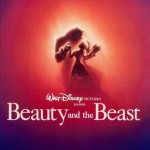 After the success of Snow White (1937), Walt Disney began looking for other fairytales to adapt, including Beauty and the Beast. His team continued working on that story through the 1930s and into the 1950s, but it “proved to be a challenge.” Disney Studio execs resurrected the idea for the satellite animation studio it opened in London to work on Who Framed Roger Rabbit in 1987, and director Richard Purdum began working with producer Don Hahn on a nonmusical version of Beauty and the Beast set in 19th-century France. Disney Company CEO Michael Eisner brought on Linda Woolverton, the first screenwriter for a Disney animated film, and she wrote a first draft before storyboarding began.
After the success of Snow White (1937), Walt Disney began looking for other fairytales to adapt, including Beauty and the Beast. His team continued working on that story through the 1930s and into the 1950s, but it “proved to be a challenge.” Disney Studio execs resurrected the idea for the satellite animation studio it opened in London to work on Who Framed Roger Rabbit in 1987, and director Richard Purdum began working with producer Don Hahn on a nonmusical version of Beauty and the Beast set in 19th-century France. Disney Company CEO Michael Eisner brought on Linda Woolverton, the first screenwriter for a Disney animated film, and she wrote a first draft before storyboarding began.
On seeing the initial storyboard reels two years later, Disney Studios chair Jeffrey Katzenberg asked the team to start over from scratch as a musical. Purdum resigned as director, and Kirk Wise and Gary Trousdale were hired, though their only directing experience had been the pre-show short for Epcot’s Cranium Command exhibit. For the score, Katzenberg asked Howard Ashman and Alan Menken, the Oscar-winning songwriters of The Little Mermaid, the film that launched the Disney Renaissance in 1989.
Disney’s version of the fairytale is based on Jeanne-Marie Leprince de Beaumont’s 1756 adaptation of the 1740 original by Gabrielle-Suzanne de Villeneuve. It focuses on the relationship between the enchanted Beast (Robby Benson) and inquisitive Belle (Paige O’Hara) but adds new characters, including Mrs. Potts (Angela Lansbury) and other enchanted household items as well as the villain Gaston (Richard White), similar to elements added in Jean Cocteau’s 1946 live-action film. In 1990, Katzenberg approved the new script and storyboarding began again.
To accommodate Ashman’s failing health, pre-production was moved from London to New York. As development came to a close, production began in Burbank on a compressed timeline (two years rather than Disney’s traditional four), due to the loss of time developing the non-musical version, and pre-recording began in New York. The cast recorded the songs live with an orchestra rather than overdubbing, to give the score the Broadway energy that Katzenberg wanted. Ashman died six months before the film was released.
With only three-quarters of the animation completed, the film premiered at the New York Film Festival on September 29, 1991, with storyboards and pencil tests filling in the unfinished segments. At the end of the screening, it received a standing ovation from the audience. The completed film premiered at Hollywood’s El Capitan Theatre on November 13, before its national release on November 22 to widespread acclaim. “Two years ago, Walt Disney Pictures reinvented the animated feature,” New York Times critic Janet Maslin wrote. “Now, lightning has definitely struck twice.” Washington Post critic Hal Hinson called the film “a near-masterpiece.”
The film received six Oscar nominations, including picture, the first for an animated movie and the first for a musical since All That Jazz in 1979. It was also the first of any genre to receive three song nominations, winning for the title track (watch here) and for its score. It was also the first animated film to win the Golden Globe.
An abridged stage version opened in 1992 at Disneyland’s Videopolis amphitheater, directed by Robert Jess Roth and choreographed by Matt West, who began work on the Broadway adaptation at Houston’s Theatre Under The Stars in 1993, before opening at New York’s Palace Theatre in 1994, starring Terrence Mann (Beast), Susan Egan (Belle), Beth Fowler (Potts), and Burke Moses (Gaston). The production, Disney’s first Broadway adaptation, was nominated for nine Tonys but only won for costumes. It ended its run in 2007 after 5,461 performances.
Other adaptations include the spin-off TV series Sing Me a Story with Belle (1995), three direct-to-video follow-ups — Beauty and the Beast: The Enchanted Christmas (1997), Beauty and the Beast: Belle’s Magical World (1998), and Belle’s Tales of Friendship (1999) — as well as as a live-action remake (2017) starring Dan Stevens (Beast), Emma Watson (Belle), Emma Thompson (Potts), and Luke Evans (Gaston). In 2002, the original animated film was selected for preservation in the Library of Congress National Film Registry.
Listen to the Grammy-winning soundtrack, then read more about the making of the movie in Tale as Old as Time: The Art and Making of Beauty and the Beast (2010) by Charles Solomon. The film is available in various video formats from Disney and streaming on Disney+.
NEXT, explore another mega-hit of Disney’s Renaissance: The Lion King (1994), co-written by Linda Woolverton, with songs by Elton John and Tim Rice, including the Oscar-winning “Can You Feel the Love Tonight” (watch here) among its Oscar-winning score. The film is available in various video formats from Disney and streaming on Disney+.
THEN, look for The Nightmare Before Christmas (1993), the stop-motion animated musical with songs by Danny Elfman, which began as a poem that Tim Burton wrote in 1982 while working as a Disney animator. The film is available in various video formats from Disney.
